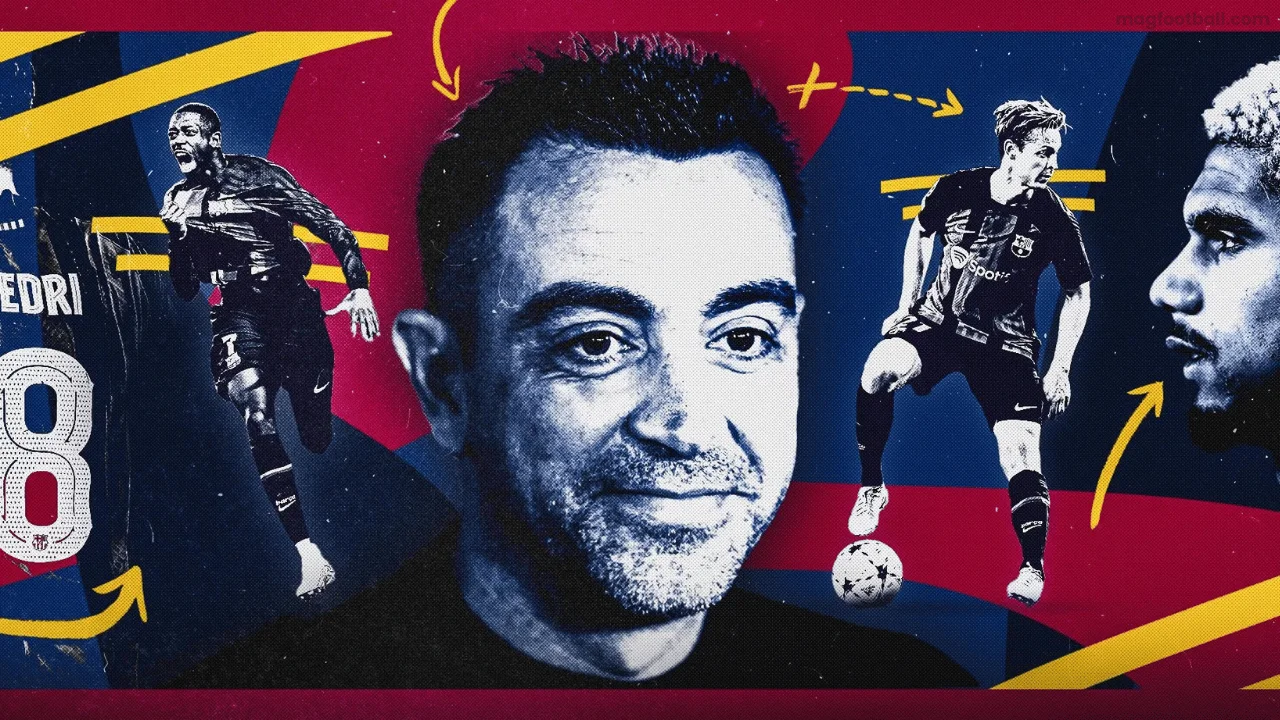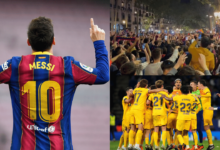How Xavi is Transforming FC Barcelona’s Tactics: A Look at His Coaching Style

Since returning to FC Barcelona as head coach, Xavi Hernández has been tasked with the immense responsibility of not only rebuilding a club in transition but also restoring the famous Barcelona playing style that had become less prominent in recent years. Xavi, a legendary midfielder who was instrumental in the Tiki-Taka era under Pep Guardiola, brings a unique understanding of possession-based football and tactical fluidity, but also recognizes the need to evolve the team to adapt to the demands of modern football.
Table of Contents
Xavi’s Tactical Vision: A Return to Barcelona’s Roots
Xavi’s philosophy is deeply rooted in possession-based football, a hallmark of Barcelona’s DNA. His tactical approach emphasizes the importance of controlling the game through quick, precise passing, maintaining possession, and dominating the midfield. This style is reminiscent of the Tiki-Taka system that Xavi thrived in as a player under Guardiola.
One of the first changes Xavi implemented was a renewed focus on positional play. He brought back the 4-3-3 formation, ensuring that players remain in their positions to maintain structure and shape during both attack and defense. By sticking to this system, Barcelona can build from the back with confidence, involving the goalkeeper in the process, and use triangular passing movements to bypass pressing opponents.
The aim of Xavi’s positional play is to create numerical superiority in key areas of the pitch, ensuring that players always have multiple passing options. This philosophy encourages a high tempo, fluid football, designed to wear down opponents and capitalize on moments of defensive disorganization.
High-Pressing and Defensive Compactness
Another critical element of Xavi’s transformation of Barcelona’s tactics is the reintroduction of the high-pressing game. Under Xavi, Barcelona looks to win the ball back as quickly as possible after losing possession, often within a matter of seconds. This high-pressing strategy, which was a defining characteristic of Guardiola’s team, ensures that Barcelona limits the amount of time opponents can hold possession, forcing them into mistakes.
Xavi also focuses on defensive compactness, ensuring that his team maintains a solid structure even when pressing high up the pitch. The idea is to compress the space between the defense and midfield, making it harder for the opposition to play through the lines. This compactness requires a high level of coordination between the defensive and midfield lines, with players such as Sergio Busquets and Frenkie de Jong playing key roles in maintaining balance.
In addition, Xavi’s Barcelona employs an aggressive counter-pressing strategy (also known as gegenpressing), where the team immediately presses after losing the ball to prevent the opposition from launching counter-attacks. This tactic allows Barcelona to regain possession in dangerous areas and maintain sustained periods of pressure.
Youth Development and Integration of La Masia Talent
A cornerstone of Xavi’s project at Barcelona is the emphasis on youth development and the integration of La Masia talent. La Masia, Barcelona’s famous academy, has produced world-class players like Xavi himself, Andrés Iniesta, and Lionel Messi. Xavi has made it clear that one of his goals is to rebuild the club by nurturing young talents and giving them significant roles in the first team.
Under Xavi’s leadership, players like Pedri, Gavi, and Ansu Fati have flourished. Pedri, for example, has become a key player in the midfield, displaying composure and intelligence far beyond his years. Gavi, another La Masia graduate, brings energy, tenacity, and tactical awareness, embodying the values that Xavi seeks to instill in his team.
By promoting these young players, Xavi is not only creating a team for the present but also laying the groundwork for Barcelona’s future. His ability to blend youth with experienced players like Gerard Piqué, Jordi Alba, and Busquets is a critical part of his tactical strategy.
Modernizing Barcelona’s Attack
While Xavi’s tactical foundation is built on possession-based football, he has also shown a willingness to modernize Barcelona’s attack by incorporating elements of direct play. While Tiki-Taka is still a key aspect of the team’s style, Xavi understands that modern football requires speed, physicality, and the ability to transition quickly from defense to attack.
Under Xavi, Barcelona has become more adept at utilizing quick transitions and counter-attacks. This shift is partly due to the presence of players like Ousmane Dembélé and Memphis Depay, who offer pace and dynamism on the wings. These players are encouraged to take on defenders and create chances in the final third, adding a directness that Barcelona lacked in recent seasons.
Xavi’s Barcelona also emphasizes the importance of vertical passing, which helps the team progress the ball more quickly through the lines. Instead of relying solely on short passing sequences, Xavi has encouraged his players to look for forward passes that break through defensive blocks and create space in the attacking third.
Rebuilding Barcelona’s Mentality: Restoring Confidence and Identity
One of the most challenging tasks for Xavi has been to restore the team’s confidence and identity after several difficult seasons. Barcelona had suffered from a series of poor results in Europe, notably the humiliating defeats against Roma, Liverpool, and Bayern Munich in the Champions League. These results had a profound impact on the team’s mentality, and Xavi recognized that rebuilding the players’ confidence was just as important as implementing his tactical philosophy.
Xavi has worked to restore Barcelona’s winning mentality by instilling a sense of belief and determination in his players. He emphasizes that Barcelona must once again become a team that dominates opponents, both domestically and in Europe. By focusing on team cohesion, discipline, and hard work, Xavi has managed to bring stability to a team that was previously lacking direction.
In addition, Xavi has placed a strong emphasis on leadership and accountability within the squad. Veteran players like Piqué, Busquets, and Alba have been tasked with guiding the younger players and ensuring that Barcelona’s core values are upheld both on and off the pitch.
Xavi’s Challenges: Financial Constraints and Squad Rebuilding
Despite the positive impact Xavi has had on Barcelona’s tactics and mentality, he faces several challenges moving forward, most notably the club’s financial crisis. Barcelona’s well-documented debt has severely limited their ability to sign new players, forcing Xavi to rely on the talent already at his disposal.
This financial situation has meant that Barcelona must focus on free transfers, loan deals, and youth development to strengthen the squad. Xavi has shown a willingness to adapt to these limitations, using a mix of experienced players and youth talent to rebuild the team. However, as Barcelona navigates its financial crisis, the pressure on Xavi to deliver results with a limited budget will continue to mount.
Conclusion: Xavi’s Tactical Revolution at Barcelona
In conclusion, Xavi Hernández’s return to FC Barcelona as head coach has brought about a tactical revolution that blends the club’s traditional possession-based football with modern innovations. His emphasis on positional play, high pressing, and the integration of La Masia talent reflects his deep understanding of Barcelona’s identity, while his willingness to incorporate elements of direct play and quick transitions shows his adaptability to the demands of modern football.
As Xavi continues to shape Barcelona’s future, his ability to manage the club’s financial constraints while maintaining a high level of tactical excellence will be crucial to the team’s success both domestically and in Europe. If he can continue to blend youth and experience, while fostering the next generation of La Masia stars, Xavi may well be the man to guide Barcelona back to the summit of European football.



